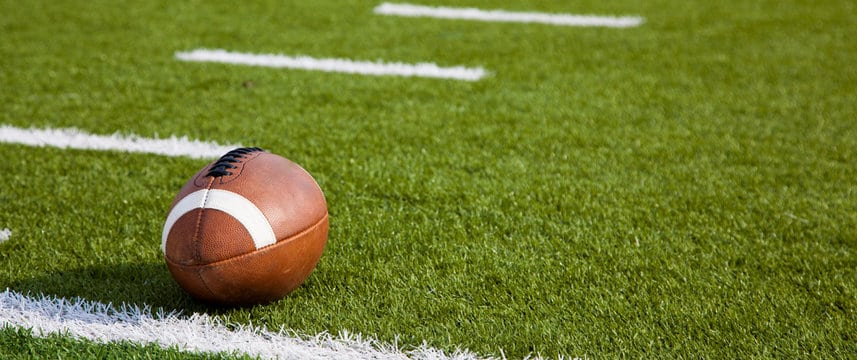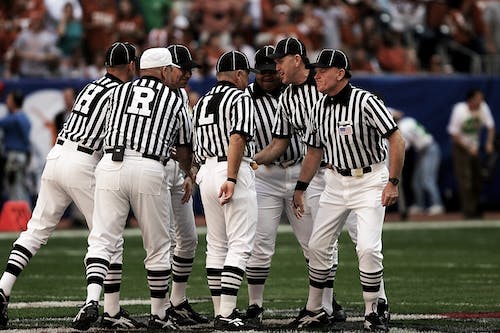How to Play Football: Stepping onto the Gridiron

Picture this: the sun shining, the roar of the crowd, and the undeniable thrill of competition. It’s a feeling like no other. Football, my friends, is a game that ignites passion, camaraderie, and a relentless drive to push your limits. Today, I want to talk about how to play football, a game to help on and off the field.
When I first stepped onto that turf, nerves intertwined with excitement. But let me tell you, football is not just a sport; it’s a gateway to a transformative experience. It teaches you about adversity, teamwork, and pushing your limits.
If you’re reading this, chances are you’re either curious about football or about to begin their football career. Whichever it is, I want you to know that you’re not alone. As someone who has been there, I understand the mix of emotions. The excitement, the uncertainty, and perhaps even a hint of self-doubt. But trust me when I say that each step you take towards learning this game will be worth it.
Throughout this blog post, I’ll be sharing insights, tips, and anecdotes that will help you navigate the world of football with confidence.
Football is not just about following the rules and mastering the techniques; its about the unwavering support of teammates who become your second family.
Step by Step Guide on How to Play Football
In this step-by-step guide, we will walk you through the intricacies of the game, from understanding the roles of the offensive and defensive team to mastering the essential skills required to excel on the football field. So, grab your helmet and lace up your cleats as we embark on this exciting journey together.

Understanding the Basics: Rules, Equipment, and Field
Football is governed by a set of rules that ensure fair play and maintain the integrity of the game. Before the game starts both teams must participate in coin toss to determine which team starts with the ball first.
The objective is for each team to score more points than the other team within the allotted time. This is achieved by advancing the ball into the opposing team’s end zone to score a touchdown, player kicks the ball through the goal posts for a field goal (worth three points), or converting touchdowns for extra points. On rare occasions, a team will score on a safety which is worth two points. A safety is when the offensive team gets tackled in their own end zone. Also the offensive has a chance to go for two points after a touchdown, know as the two point conversion.
The Fundamental Rules of Football
The game is divided into four quarters, with the first half (1st and 2nd quarter) halftime and then second half (3rd and 4th quarter). Each team is given a certain number of downs to advance the ball at least 10 yards. If successful, they receive a new set of downs. If they fail to reach the required distance, the opposing team gains possession. Penalties can be incurred for various infractions, such as holding, pass interference, or false starts, resulting in yardage losses or automatic first down for the opposing team.
Essential Equipment for a Safe and Enjoyable Experience
Football is a physically demanding sport, and wearing the right equipment is crucial for player safety. The essential gear includes a helmet, which protects the head from potential impact and concussions. Shoulder pads provide protection to the upper body, while chest protectors and rib pads shield vital organs. Knee and thigh pads, along with hip and tailbone pads, offer additional protection. Cleats provide traction on the field, allowing players to change direction quickly. Gloves that protect your hand and endure all weather conditions.
Navigating the Football Field: Markings and Dimensions
The football field is a rectangular playing surface measuring 100 yards in length and 53.3 yards in width. Most football fields are natural grass but the other ones are turf. It is divided into two halves, with each team defending its own end zone. The end zones are 10 yards in length and same width size. The field is marked with various lines, including the sidelines, goal lines, and end lines. Yardage markers, known as hash marks, are placed every 5 yards to assist in measuring the distance gained or lost during plays.
In addition to the basic markings, the field also features key areas such as the 10-yard line, where teams strive to reach for a new set of downs, and the red zone, which refers to the area between the opponent’s 20-yard line and the goal line.
Understanding the rules, having the proper equipment, and being familiar with the field markings and dimensions are essential for a safe, enjoyable, and competitive football experience. By mastering these foundational elements, you’ll be well-prepared to participate in the game, appreciate its intricacies, and fully immerse yourself in the thrilling world of football.
The Players: Positions and Responsibilities
In the game of football, each player has a unique role and set of responsibilities that contribute to the team’s success. Understanding the various positions is crucial for both the offensive and defensive team.

Offense
On the offensive side, the quarterback takes charge, making strategic decisions and leading the team’s plays. The wide receivers use their speed and agility to catch passes and move the ball down the field, while the running backs showcase their versatility by both running with the ball and the ability to catch the ball. The offensive line acts as the backbone, providing protection to the quarterback and creating pathways for the running game. The tight ends are a hybrid between a linemen and a receiver. The offensive team consists of one quarterback, three wide receivers, one tight end, one running back, and five linemen.
Defense
On the defensive side, the positions differ but are equally vital. The defensive line aims to disrupt the opposing team’s offensive plays by applying pressure on the quarterback and shutting down running lanes. The linebackers play a pivotal role in both stopping the run and covering wide receivers, displaying their versatility and football IQ. Lastly, the defensive backs are responsible for defending against the passing game, using their speed and agility to intercept passes and break up plays. The defending team tries to prevent the offensive team or scoring team from scoring.
By understanding the positions and their unique responsibilities, you’ll gain a deeper appreciation for the teamwork and coordination required to succeed in football. Stay tuned as we explore each position in more detail, uncovering the intricacies and skills needed to excel in these roles on the football field.
Mastering Football Skills
In the electrifying game of football, mastering essential skills is the key to becoming a standout player. From catching the ball with precision to unleashing powerful throws and executing solid tackles, developing these abilities will set you apart on the field. We’ll delve into the art of catching, honing your hand-eye coordination and body control to make those crucial receptions. You’ll learn techniques for positioning yourself, securing the ball, and maintaining possession amidst tight coverage.
Throwing the ball is an art form in itself, and we’ll guide you through the mechanics and nuances of delivering accurate and powerful passes. From proper grip and footwork to reading defenses and making split-second decisions, you’ll gain the skills needed to become a quarterback that commands the field.
And when it comes to tackling, we’ll emphasize the importance of technique and safety. You’ll learn how to generate power through your lower body, wrap up opponents effectively, and drive them to the ground while minimizing the risk of injury.
By mastering these football skills, you’ll elevate your game and become a formidable force on the field. So, get ready to catch the ball, throw, and tackle players on your way to success as we delve deeper into the intricacies of each skill and provide you with valuable tips and drills to refine your technique.
Strategy and Tactics in Football
While football requires physical prowess, it is also a game of strategy and tactics even before the game begins. Understanding the intricacies of offensive and defensive strategies can give you a competitive edge on the field. Offenses have the choice to either pass or run the ball. Whether it’s the decision to pass or run the ball, the art of gaining and maintaining possession, or the strategic maneuvers to score points, these elements shape the outcome of the game.
On the offensive side, coaches and players carefully craft game plans to exploit weaknesses in the opposing team defense. They analyze formations, assess matchups, and execute plays that maximize their chances of success. Whether it’s utilizing a strong passing game to exploit gaps in coverage or employing a powerful running attack to dominate the ground, offensive strategy is about finding the most effective way to move the ball, get the first down, and score points. Also, time management before half time and the end of regulation is another skill that can’t be overlooked.
Defensively, the focus is on disrupting the opposing team’s offensive plans and stopping either passing or running play. Coaches design schemes that aim to stifle the opposing team’s offense: running game, pressure the quarterback, and create turnovers. It involves strategic positioning, reading the offense, and executing well-timed blitzes or coverages to disrupt plays ensuring the offense fails to get a first down.
Football Training and Drills

To excel in the game of football, it takes more than just natural talent. Training and consistent practice are essential to develop the physical attributes required to perform at your best. In this section, we’ll explore a variety of exercises, agility drills, and speed-enhancing techniques that will help you take your game to the next level.
Strength and conditioning form the foundation of football training. We’ll delve into exercises that build overall strength, focusing on key muscle groups that contribute to explosive movements, stability, and endurance. From weightlifting routines to bodyweight exercises, we’ll provide you with a comprehensive training regimen that targets the specific needs of a football player.
Agility is a crucial attribute that allows you to change direction quickly, evade defenders, and maneuver through tight spaces. We’ll introduce agility drills that enhance your footwork, coordination, and reaction time. Through ladder drills, cone drills, and shuttle runs, you’ll develop the agility and quickness needed to outmaneuver opponents on the field.
Additionally, speed is a game-changer in football. We’ll explore speed training techniques that improve your acceleration, top speed, and overall sprinting mechanics. From sprint intervals to resistance training, these drills will enhance your speed, enabling you to break away from a defending player and make game-changing plays.
By incorporating these training exercises and drills into your routine, you’ll enhance your physical capabilities, elevate your performance, and reduce the risk of injuries. So, get ready to hit the gym, lace up your running shoes, and commit to a dedicated training program that will transform you into a well-rounded athlete on the football field.
Safety Guidelines and Injury Prevention
In any physical sport like football, safety should always be a top priority. Protecting yourself and your teammates is crucial to ensure a long and enjoyable football journey. In this section, we’ll delve into essential safety guidelines and injury prevention strategies that will keep you on the field and away from the sidelines.
First and foremost, the proper use of protective equipment is vital. We’ll discuss the importance of wearing helmets, shoulder pads, mouthguards, and other gear that provide essential protection against head and bodily injuries. Understanding how to properly fit and maintain your equipment is crucial for maximum effectiveness.
Tackling is an integral part of football, but it’s important to do it safely to prevent injuries. We’ll explore proper tackling techniques, emphasizing the importance of maintaining good form, using the correct body position, and aiming for the lower body instead of the head. By mastering safe tackling techniques, you can protect yourself and your opponent from unnecessary harm.
Hydration and proper nutrition are often overlooked but play a significant role in injury prevention. We’ll discuss the importance of staying hydrated before, during, and after practices and games. Additionally, we’ll explore the impact of a well-balanced diet on your overall performance and injury resilience.
Understanding common injuries and their prevention is also essential. We’ll cover strategies to prevent sprains, strains, concussions, and other common football-related injuries. You’ll learn warm-up and cool-down routines, stretching exercises, and strengthening drills that can help reduce the risk of injury and promote overall physical well-being.
By following these safety guidelines and implementing injury prevention strategies, you can enjoy the game of football while minimizing the risk of harm. Remember, your well-being and the well-being of your teammates should always be a priority.
Rules and Regulations

Football, like any sport, operates within a framework of rules and regulations that ensure fair play and maintain the integrity of the game. Understanding these rules is essential for players, coaches, and fans alike. In this section, we’ll dive into the core rules of football and shed light on the penalties that come with violating them.
Football has a comprehensive set of rules that govern various aspects of the game, including scoring, player conduct, and game flow. We’ll explore key rules such as touchdown scoring, field goals, extra points, and how teams gain possession. You’ll gain insights into the rules that dictate player eligibility, substitution, and the timing of the game.
Penalties play a crucial role in enforcing the rules and maintaining discipline on the field. We’ll discuss the various penalties in football, ranging from minor infractions to major violations. Whether it’s false starts, holding, pass interference, or personal fouls, understanding the penalties and their consequences will help you avoid costly mistakes and keep your team in a favorable position.
Additionally, we’ll touch upon instant replay and challenges, which have become an integral part of modern football. These mechanisms allow teams to challenge certain rulings made by the officials and have them reviewed for accuracy.
By familiarizing yourself with the rules and regulations of football, you’ll not only be able to play the game more effectively but also appreciate the strategic decisions made by coaches and officials. So, let’s explore the rulebook, unravel the intricacies of penalties, and deepen our understanding of the rules that shape the game of football.
Advancing in Football: Improving Performance and Reaching New Heights
Football is a dynamic and ever-evolving sport, and as a player, your journey doesn’t end with the basics. To truly excel and reach new heights, you must continuously strive for improvement and push the boundaries of your abilities. In this section, we’ll explore ways to advance in football, enhance your performance, and unlock your full potential on the field.
One crucial aspect of advancing in football is setting goals and having a growth mindset. We’ll discuss the importance of defining clear objectives and creating a roadmap to achieve them. Whether it’s improving specific skills, earning a starting position, or making it to the next level, setting goals will provide you with the motivation and direction needed to keep progressing.
Continued practice and training are essential for enhancing performance. We’ll explore advanced techniques and drills that focus on refining your skills, building strength and speed, and improving your football IQ. From studying game film to participating in specialized training programs, we’ll delve into the strategies that can take your performance to new heights.
Mental preparation is just as crucial as physical training in football. Master the following: managing pressure, building resilience, and staying focused during high-stakes situations. Captain characteristics include teamwork, communication, and leadership in advancing as a player and elevating the performance of the entire team.
Searching for opportunities to advance in football, such as joining higher-level leagues, showcases and camps, or seeking college or professional opportunities. We’ll provide insights on the pathways available and offer advice on how to navigate the competitive landscape of football.
Dedicating yourself to continuous improvement, and seizing opportunities, you can advance in football and reach new heights. Lace up your boots, sharpen your skills, and set your sights on greatness and keep moving forward.
Wrap-up.
Football is a game that captures our hearts and fuels our passion. It’s a sport that requires dedication, skill, and a constant drive for improvement. Now, it’s time to put that knowledge into action and take your football journey to the next level.
Looking for the right tools, equipment, or resources to enhance your performance, I encourage you to check out our other tutorials and product reviews. Whether you’re in need of top-notch gear, advanced training programs, or expert guidance, they have you covered.
Remember, success in football comes from a combination of talent, hard work, and having the right resources at your disposal. So, don’t hesitate to take that leap and explore the possibilities that await you. Click the link below to discover how [affiliate link, product, or services] can help you unlock your full potential on the football field and make your dreams a reality. Let’s embark on this journey together and create a future filled with football success!
Related Articles